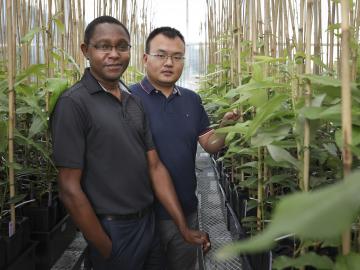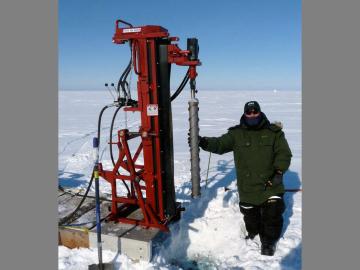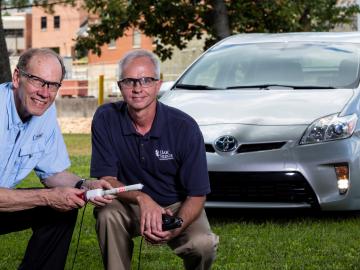
Filter News
Area of Research
- (-) Clean Energy (108)
- (-) Supercomputing (54)
- Advanced Manufacturing (8)
- Biological Systems (3)
- Biology and Environment (8)
- Building Technologies (3)
- Climate and Environmental Systems (4)
- Computational Biology (1)
- Computational Engineering (1)
- Computer Science (8)
- Energy Frontier Research Centers (1)
- Fossil Energy (1)
- Fuel Cycle Science and Technology (1)
- Fusion Energy (7)
- Materials (107)
- National Security (7)
- Neutron Science (49)
- Nuclear Science and Technology (25)
- Nuclear Systems Modeling, Simulation and Validation (1)
- Quantum information Science (3)
- Sensors and Controls (2)
- Transportation Systems (1)
News Topics
- 3-D Printing/Advanced Manufacturing (14)
- Advanced Reactors (1)
- Artificial Intelligence (8)
- Big Data (4)
- Bioenergy (8)
- Biology (1)
- Biomedical (4)
- Biotechnology (1)
- Clean Water (4)
- Climate Change (1)
- Composites (2)
- Computer Science (31)
- Critical Materials (1)
- Cybersecurity (3)
- Energy Storage (6)
- Environment (14)
- Exascale Computing (2)
- Frontier (2)
- Grid (6)
- Machine Learning (1)
- Materials Science (7)
- Mercury (2)
- Microscopy (1)
- Nanotechnology (2)
- Neutron Science (2)
- Nuclear Energy (3)
- Physics (2)
- Polymers (3)
- Quantum Science (5)
- Security (4)
- Space Exploration (4)
- Summit (11)
- Sustainable Energy (8)
- Transportation (14)
Media Contacts

The US Department of Energy’s Oak Ridge National Laboratory is once again officially home to the fastest supercomputer in the world, according to the TOP500 List, a semiannual ranking of the world’s fastest computing systems.

In an effort to reduce errors in the analyses of diagnostic images by health professionals, a team of researchers from the Department of Energy’s Oak Ridge National Laboratory has improved understanding of the cognitive processes

For decades, biologists have believed a key enzyme in plants had one function—produce amino acids, which are vital to plant survival and also essential to human diets. But for Wellington Muchero, Meng Xie and their colleagues, this enzyme does more than advertised. They had run a series of experiments on poplar plants that consistently revealed mutations in a structure of the life-sustaining enzyme that was not previously known to exist.

The U.S. Department of Energy’s Oak Ridge National Laboratory today unveiled Summit as the world’s most powerful and smartest scientific supercomputer.

Digging into the Arctic tundra, scientists at Oak Ridge National Laboratory have uncovered new insights into how quickly microorganisms break down organic matter in warming Arctic soil—a process that releases stored carbon as carbon dioxide and methane. The team studied soil extracted...

Scientists at the Department of Energy’s Oak Ridge National Laboratory are the first to successfully simulate an atomic nucleus using a quantum computer. The results, published in Physical Review Letters, demonstrate the ability of quantum systems to compute nuclear ph...

For the past six years, some 140 scientists from five institutions have traveled to the Arctic Circle and beyond to gather field data as part of the Department of Energy-sponsored NGEE Arctic project. This article gives insight into how scientists gather the measurements that inform t...

Christina Forrester’s meticulous nature is a plus for her work leading technical testing and analysis of radiological and nuclear detection devices, whether that work takes her to the Desert Southwest or to her own lab outfitted with specialized



